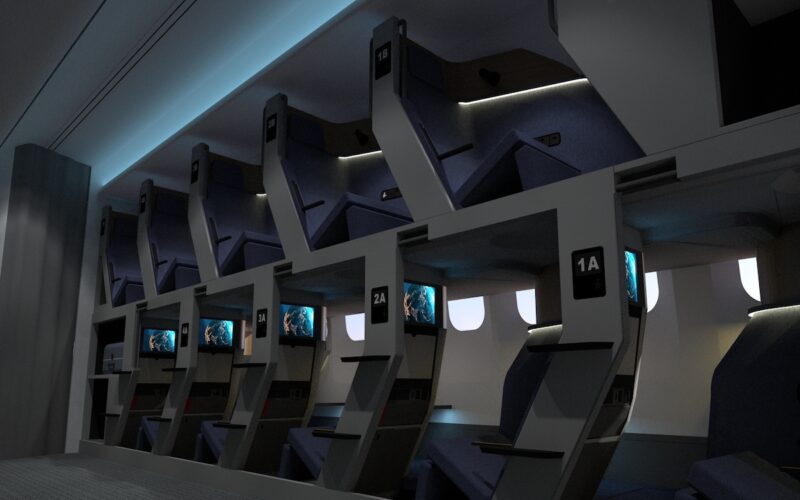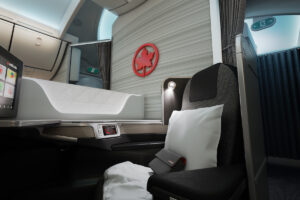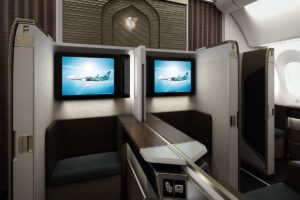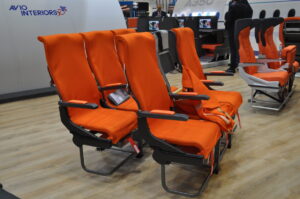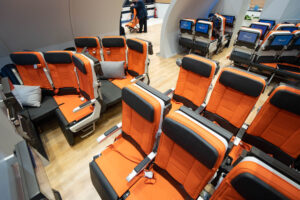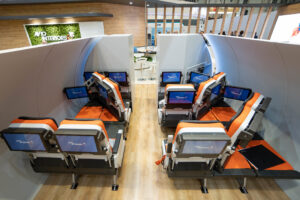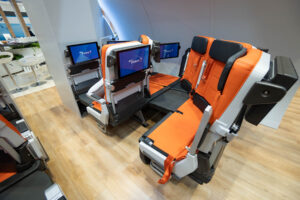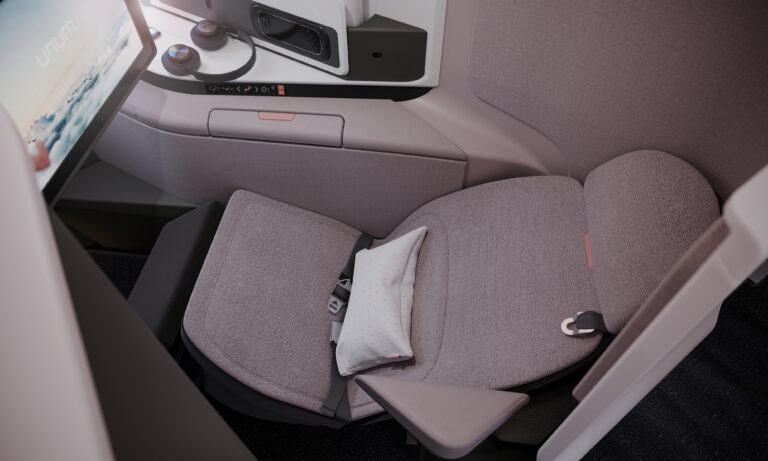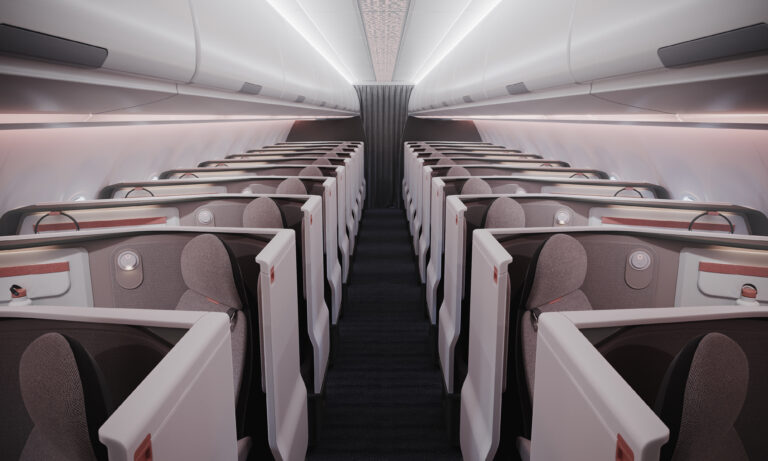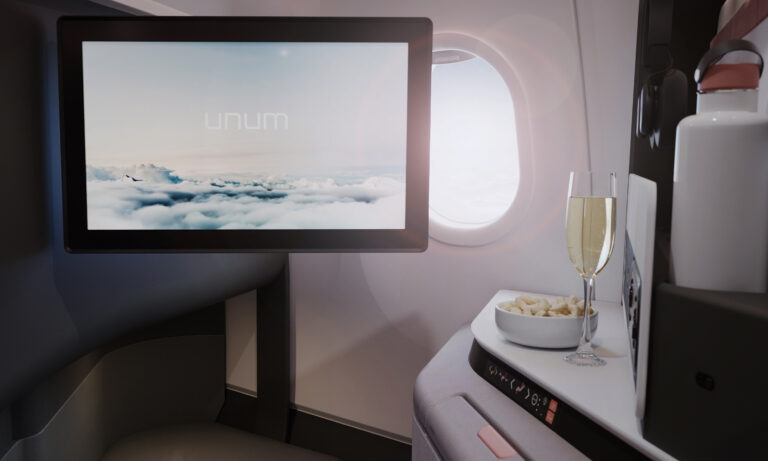Airlines invest hundreds of millions, even billions, to upgrade their aircraft cabins and enhance the passenger experience that they offer. But ultimately, a big deal depends on the humble seat.
Spare a thought for aircraft seat designers forced to restrain their creative instincts. They do their best to make the hours you spend within the constrained space of a flying metal tube as pleasant as possible, but ultimately the industry must balance different conflicting interests and requirements.
After the technical and physical realities of the aircraft cabin, the stringent requirements of regulators and the financial and operational needs of the always margin-pressed airlines. What’s left for the passengers’ needs?
“It is necessary to have someone that champions the passenger experience,” stated Anthony Harcup, Senior Director of Airline Experience at Teague, a Seattle-based design studio with an extensive track record working for the airline and transportation industries, including designs for Boeing, Air Canada and Oman Air’s Boeing 787 fleet as well as for American Airlines’ upcoming premium cabins (expected to come into service in 2024).
Backing these words with action, Teague presented one of its most revolutionary designs at last year’s Aircraft Interiors Expo in Hamburg.
The ELEVATE seat concept, developed together with NORDAM, a cabin interior manufacturer, uses several points of attachment throughout the cabin to fit narrowbody aircraft with spacious “floating” compartments that provide the passengers with the sort of private spaces more typical of widebody aircraft premium cabins.
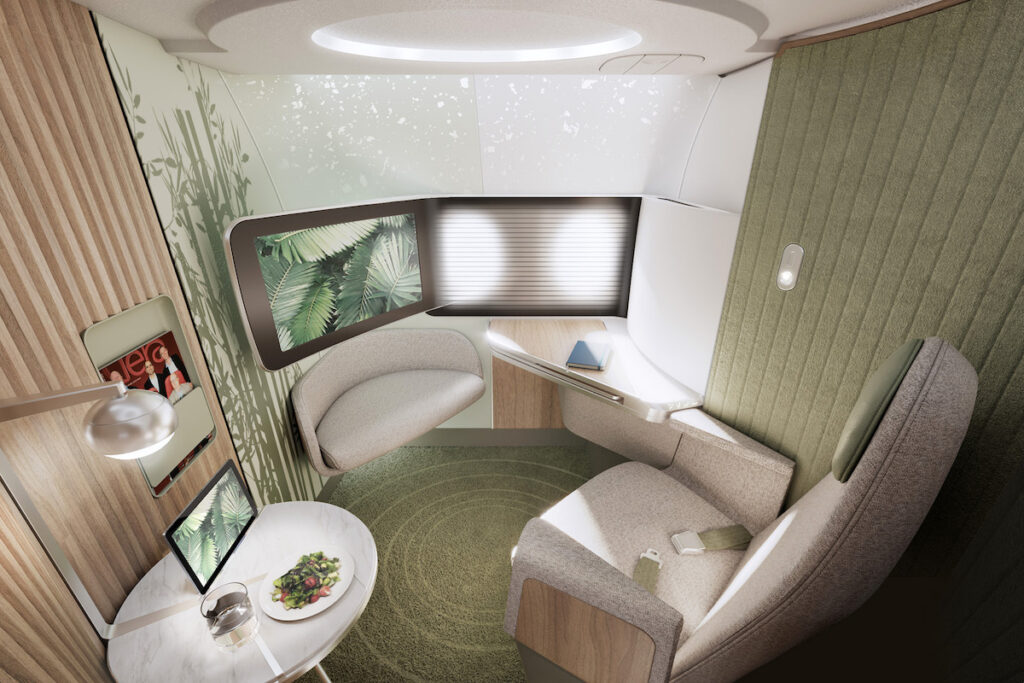
This concept also addresses one of the main talking points in this segment of the industry right now: how to rethink the passenger experience when single-aisle, narrowbody aircraft are flying increasingly longer segments.
“The decision to move towards narrow bodies was not driven by passenger experience concerns, though, but because of other operational and financial aspects” explained Harcup.
Victor Carlioz and Matt Cleary, founders of ACLA, a boutique design studio based in the Los Angeles area, which specializes in aircraft interiors, concur with this opinion: “Those planes were not necessarily designed for those missions, and they come with a new set of challenges. This is not just about the seats, it involves also thinking about things like the availability of galleys and toilets, for example.”
This need is only expected to become more pressing as even longer range narrowbodies, like the A321XLR, enter service in the coming years.
There’s a vast distance between a cool-looking rendering and a fully certified product, let alone one that is actively ordered by the airlines.
Harcup conceded that, while some airlines have expressed interest in the idea, the chance of concepts like the ELEVATE cabin becoming a reality onboard airliners is slim in the foreseeable future, but this is expected in the industry.
“It is like making a statement that enables people to see the potential of a certain approach,” he explained.
This is an assessment shared by Luca Vetica, CEO of Aviointeriors, an Italian firm that designs and manufactures aircraft seats.
At the last edition of the Hamburg trade show, Aviointeriors presented not just one, but three eye-catching concepts.
One of them is the Fabryseat, an incredibly light economy class seat that has been stripped down to its bare minimum components. In fact, its name alludes to the fact that it is essentially, a piece of fabric covering the seat structure.
The other two are the Heric (which is short for Heringbone in Cruise) and the DoDo (for “DoubleDouble” seat), which have flexible elements that make it possible to “upgrade” economy class seats to premium seats depending on the demand.
There is, however, no plan to start serial production of these concepts for now. This is not unlike what happens in the world of fashion, in which designers present their most head-turning ideas at industry shows even if they know fully well that they are unlikely to make it to the high street just as they are.
“Disruptive concepts help get conversations started between airlines and designers and some of them make it to the market, normally in the uppermost segments, but change is mostly incremental” explained Carlioz and Cleary, of ACLA.
These concepts help steer the conversation around the main topics that concern the industry, one of which is sustainability.
In the world of aircraft seating sustainability is a factor in the choice of materials and the ability of the designers and engineers to deliver weight savings that help reduce fuel burn while also making use of sustainable materials.
“Perfection is when there is nothing left to take away,” said Chris Brady, a long-time industry veteran, former CEO of Acro Seating and founder of Unum, a startup aircraft seat maker.
Brady detected that, in an industry where there are just a handful of players, smaller airlines have not always had their concerns properly addressed.
Unum’s business class seat, which is currently undergoing certification, is designed to provide a premium experience while remaining simple in its design and structure. The startup has stripped the business class product to its most essential elements in order to lower the environmental footprint. “After all is space what passengers are looking for, you don’t need that much seat,” Brady explained.
The firm is also highlighting its Made in Britain credentials at a time when long supply chains are under increasing scrutiny, both because of their environmental footprint and their fragility to far-flung events.
Interestingly, weight saving is also one of the selling points of the Chaise Longue Economy Seat, a stacked, two-level seat concept developed by Spanish entrepreneur Alejandro Nuñez Vicente.
While it may look bulky, each unit of the Chaise Longue Economy Seat replaces two rows and the corresponding overhead bin in the central area of a widebody aircraft. By stacking the seats on different levels, it optimizes the space to give some more legroom to economy class passengers.
This concept, which was also nominated for one of the prestigious Crystal Cabin awards, has since attracted the interest of some private venture capitalists that have helped Nuñez Vicente refine the concept and launch a business to further develop it and start the path towards certification.
Another concept that explores the vertical dimension in order to gain space for passengers is the Zephyr seat, which aims to bring the comforts of lie flat seats to the economy class cabin. Although it garnered a fair amount of public interest as well as backing from some prominent Silicon Valley investors, its founder Jeffrey O’Neill has placed the project on hold due to the difficulties encountered in getting airlines to commit to such a disruptive concept.
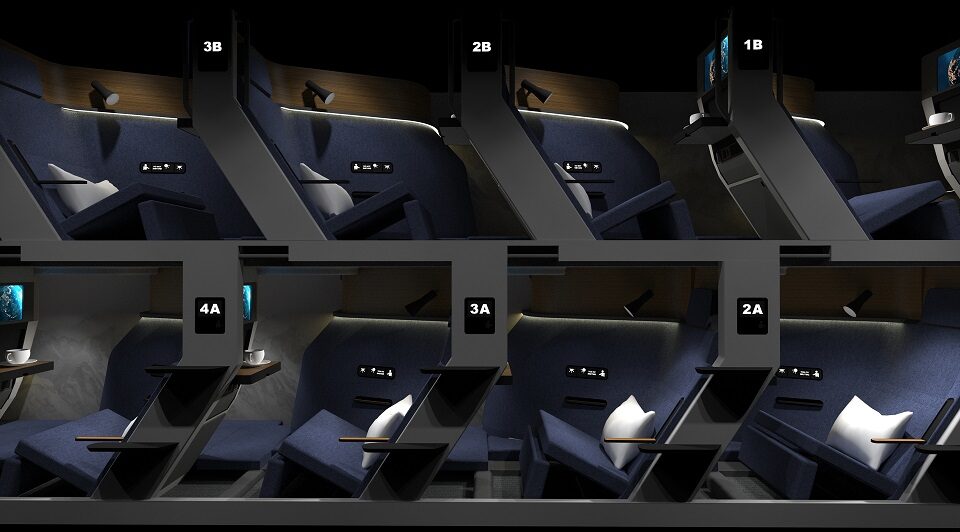
Perhaps the closest we are to seeing this type of stacked accommodation onboard aircraft is Air New Zealand’s SkyNest, which is essentially a bunk bed that premium economy and economy class passengers are going to be able to rent by the hour. SkyNest is expected to be rolled out by the Kiwi airline on its Boeing 787 fleet as early as 2024.
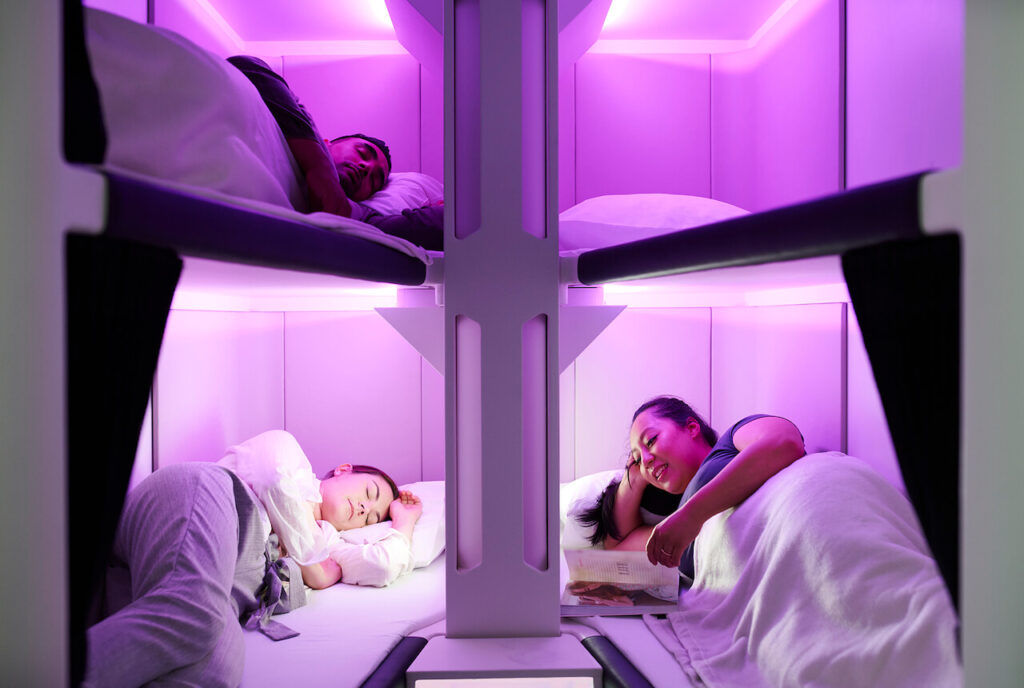
The industry is conservative, even if some operators acknowledge the originality and brilliance of some designs, no one wants to be first. Incremental iterations of an existing product are usually preferred over more disruptive, but also riskier, changes.
There is also an element to consider and that is the consistency across the product line, not just when it comes to the cabin itself but how a certain seat concept fits into the airline’s commercial strategy and existing distribution channels.
“Technical and certification challenges may be easier to sort out than those related to the commercialization of the product. If you have an amazing new seat concept, but you are the only one that has it, there is no effective way for GDS or other travel distributors to market it, it’s a really hard sell. It is a product consistency problem,” explained Brady.
The coming of age, these last few years, of the Premium Economy concept is a case in point.
“Premium economy is currently a major driver of growth. It was conceived in the 1990s, but it has taken some 30 years for it to become mainstream. In order for the concept to take off it required a large enough point-to-point market, something like, let’s say, London to New York,” Brady continued. “It is only in the last few years that every major carrier has added it. Why? Because it was difficult to fit into itineraries that were consistent in terms of product and distributors didn’t know how to sell it.”
Angus Baigent, of Hamburg Aviation, the organization that runs the annual Crystal Cabin Awards, rewarding innovators in the aircraft cabin space, highlights some recent seat designs that, while remaining within the industry’s orthodoxy, have introduced some remarkable innovative elements.
This is the case of Finnair’s AirLounge™, a business class seat made by Collins that made headlines because it doesn’t recline and, yet, it has been amply lauded for its comfort and the spaciousness.
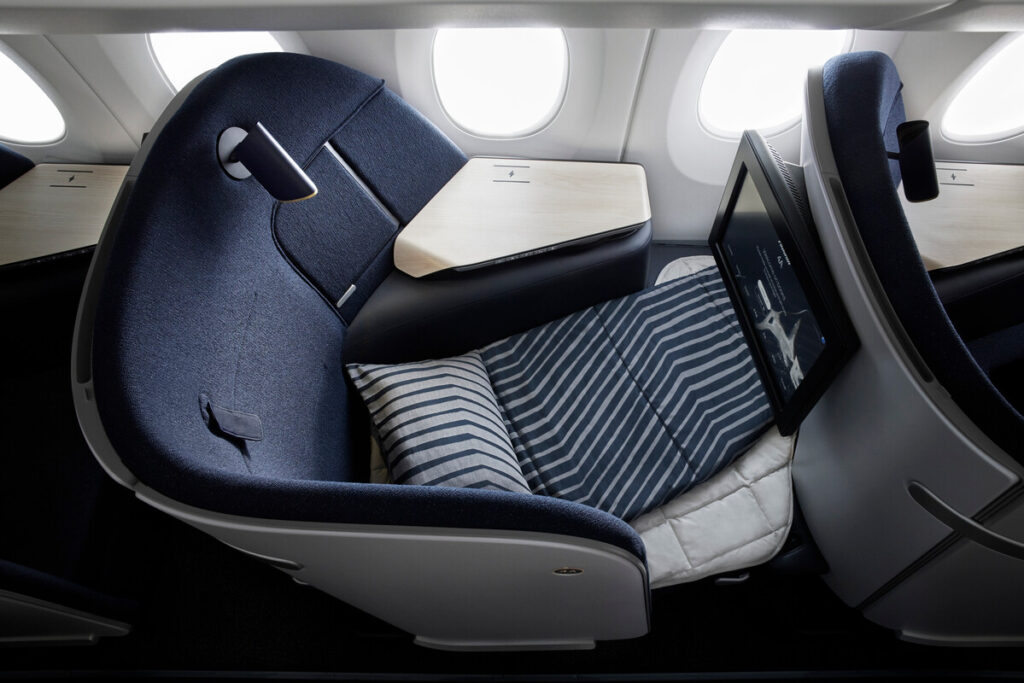
“When you try it, you notice the space it affords and the sense of coziness, much in line with the Nordic concept of ‘hygge’,” Baigent explained.
Another area in which designers are making strides is that of providing better options for passengers that have reduced mobility.
In this regard, Baigent mentioned two recent concepts, the Fly Your Wheels Suite concept, the result of a collaboration between the National Institute for Aviation Research of Wichita State University and Collins Aerospace and Air 4 All, a system that allows wheelchair users to attach it to a regular aircraft seat. The latter is a design by PriestmanGoode, Flying Disabled and SWS Certification. Recent regulatory moves could pave the way for these types of accessibility-enhancing innovations becoming standard in the cabin.
Ultimately the success (or not) of an airline product depends on the ability to deliver a holistic, seamless experience as possible across all touchpoints in the travel journey, one capable of creating an emotional connection between the traveler and the airline. A big responsibility that rests on the shoulders of the humble aircraft seat.

